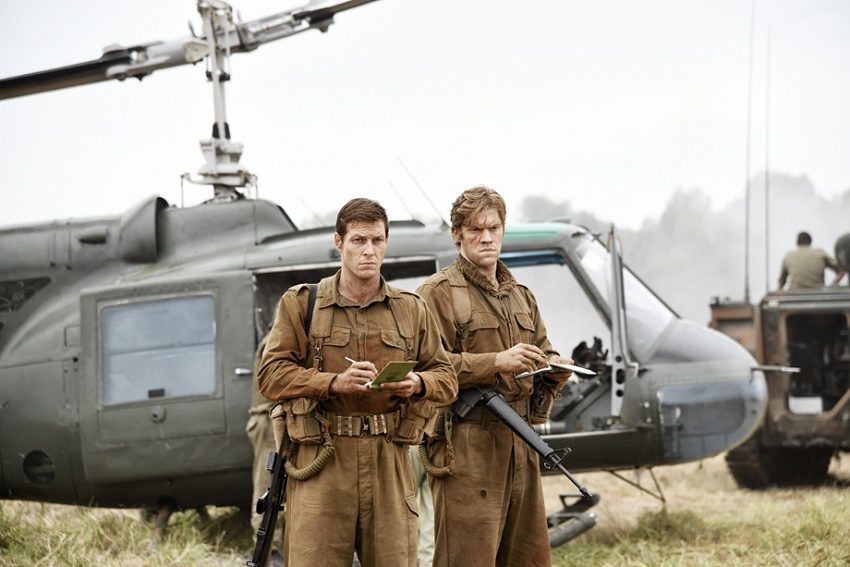Film Review: Danger Close: The Battle of Long Tan

Aussie director Kriv Stenders factual war drama proves an intense and powerful experience, but struggles to balance a contempt for the horror of war with an embrace of its potential for cinematic spectacle.
The prolific Red Dog director took over at some point from Bruce Beresford, and makes the violent combat scenes here really kick and coaxes good work from a familiar cast. But, like so many war movies from so many countries, this does try to have it both ways, with much about the horror and futility of war sitting uncomfortably alongside just a little celebration of the wonder of it all.
We open in August 1966 with career officer Major Harry Smith (Travis Fimmel in a role that might once have been filled by Sam Worthington) of Delta Company, 6th Battalion, Royal Australian Regiment, on operation in Nui Dat, Phuoc Tuy Province, and reacting angrily to nighttime mortar and rocket attacks on the camp. It’s an impressive performance from Fimmel too, as his early slightly strange behaviour and aggressive manner demonstrate both his annoyance at having to “babysit” a bunch of mostly conscripts from Australia and New Zealand and, just perhaps, a touch of PTSD.
There’s tension between Smith and Lieutenant Colonel Colin Townsend (Anthony Hayes) and Task Force Commander Brigadier David Jackson (Richard Roxburgh, excellent), and he also comes down hard on young, trigger-happy country boy Private Paul Large (Daniel Webber). Harry takes his Company out the morning after the attacks to continue the search for enemy positions and his men are infuriated that they’re going to be missing a concert featuring no less than Col Joye (Geoffrey Winter) and Little Pattie (Home And Away star Emmy Dougall, fine in the only proper speaking role here for a woman).
Winding up, after much suspense, in Long Tan, a rubber plantation recreated in Queensland’s Village Roadshow Studios, we get down to what we know is coming, as these 108 inexperienced men fight for their lives against well over 1000 North Vietnamese soldiers for over three and a half hours, and in monsoonal rain. This pretty much occupies the entire second half of the film, and the often-graphic action is intercut with what goes on back at the camp, as the superiors argue over what to do to save these apparently doomed soldiers and Roxburgh’s Jackson, in particular, is made to look somewhat spineless.
That rare film which depicts a specifically Australian Vietnam story (see also The Odd Angry Shot and very little else), Stenders’ movie doesn’t offer any perspective from the Vietnamese, who are seen as a relentless but faceless force, and also falls prey to a little cliché as characters open up at crucial moments to talk about their lives – and we therefore know that they’re done for. However, the authentic look to the film, the fierce fighting set pieces and the committed performances should please Vietnam veterans, who have been waiting for this story to make it to the bigscreen for decades.
And, despite the problems, it’s hard not to be moved as the credits show the actors alongside snapshots of the men they played. It reminds us: these were real people. This really happened. Never forget.
Danger Close: The Battle of Long Tan (MA) is in cinemas now